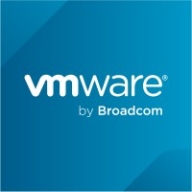

Find out in this report how the two Software Defined Networking (SDN) solutions compare in terms of features, pricing, service and support, easy of deployment, and ROI.
We raised it in TAC, and they were very approachable and supportive.
They were always helpful.
They are quick and understand things easily, so the support is aligned very effectively.
Our technicians have a good support experience from the company.
Scalability depends on the model number of each switch, but generally, it is scalable according to need.
There is a high level of satisfaction with its ability to scale.
Sometimes it is not working in Azure or GCP as it has interoperability only with some clouds, so that part needs work.
The product performs at 99% efficiency without any showstoppers or significant issues.
For stability, I would rate VMware NSX as a nine out of ten.
VeloCloud provides much more detail and many more tabs for troubleshooting everything, such as ARP, IPv4, IPv6, TCP dumps, routing, and switching.
I work with Fortinet where with a single command you can deploy the entire SD-WAN along with FortiGuard within minutes.
The initial configuration and integration within our existing environment were not easy.
The pricing for the product is another area for improvement as I'm not satisfied nowadays.
The licensing model is expensive and could be more flexible, especially after Broadcom bought VMware.
If the license expires in FortiGate, the basic functionality will work, but in Meraki SD-WAN, the entire system will shut down.
The cost of VMware NSX is considered high.
VMware NSX is a little higher in price compared to the competition.
There is room for improvement in terms of pricing.
The architecture allows us to see whether the physical cable is connected or disconnected.
The SD-WAN features of Meraki SD-WAN include the overlay setup that can connect between the switch and the Viptela device or between the VCE of another vendor without needing to be vendor-specific.
Micro-segmentation enhances security and provides more secure data in your data center.
The most powerful feature of VMware NSX is the micro-segmentation that allows us to separate the different protocols our application works with.
I value the ability to dynamically configure our network on the fly using VMware NSX.
| Product | Market Share (%) |
|---|---|
| Meraki SD-WAN | 20.9% |
| Cisco ACI | 13.4% |
| Omada Cloud SDN | 10.8% |
| Other | 54.900000000000006% |
| Product | Market Share (%) |
|---|---|
| VMware NSX | 40.7% |
| Cisco ACI | 43.5% |
| Cisco Enterprise Network Functions Virtualization | 4.3% |
| Other | 11.5% |


| Company Size | Count |
|---|---|
| Small Business | 38 |
| Midsize Enterprise | 13 |
| Large Enterprise | 31 |
| Company Size | Count |
|---|---|
| Small Business | 33 |
| Midsize Enterprise | 23 |
| Large Enterprise | 69 |
Software-defined WAN is a new approach to network connectivity that lowers operational costs and improves resource usage for multi-site deployments, allowing network administrators to use bandwidth more efficiently and ensure the highest possible level of performance for critical applications without sacrificing security or data privacy. For more information on deploying and configuring SD-WAN on the Meraki MX Security Appliance, see the Meraki SD-WAN Deployment Guide.
VMware NSX is a comprehensive tool for network virtualization and security, offering advanced features like micro-segmentation and multi-cloud networking to enhance scalability and management efficiency within enterprises.
VMware NSX revolutionizes enterprise networking by integrating security and scalability into one streamlined platform. With capabilities like dynamic policy updates and automation, it simplifies complex configurations and provides robust API integration. Its support for Layer 4 and 7 load balancing, along with its seamless integration in multi-cloud environments, makes it a preferred choice among companies. Although deployment speed and management console features require refinement, NSX is an effective solution for private cloud and hybrid environments, enabling centralized orchestration and management of complex networks.
What are the key features of VMware NSX?
What benefits and ROI should users consider?
In the tech industry, VMware NSX is instrumental in managing private and hybrid cloud environments, allowing companies to replace traditional networking with software-defined networks. In finance, it helps secure transactional data through micro-segmentation. Healthcare organizations leverage its flexibility for managing sensitive patient information securely and integrating cloud services.
We monitor all Software Defined Networking (SDN) reviews to prevent fraudulent reviews and keep review quality high. We do not post reviews by company employees or direct competitors. We validate each review for authenticity via cross-reference with LinkedIn, and personal follow-up with the reviewer when necessary.